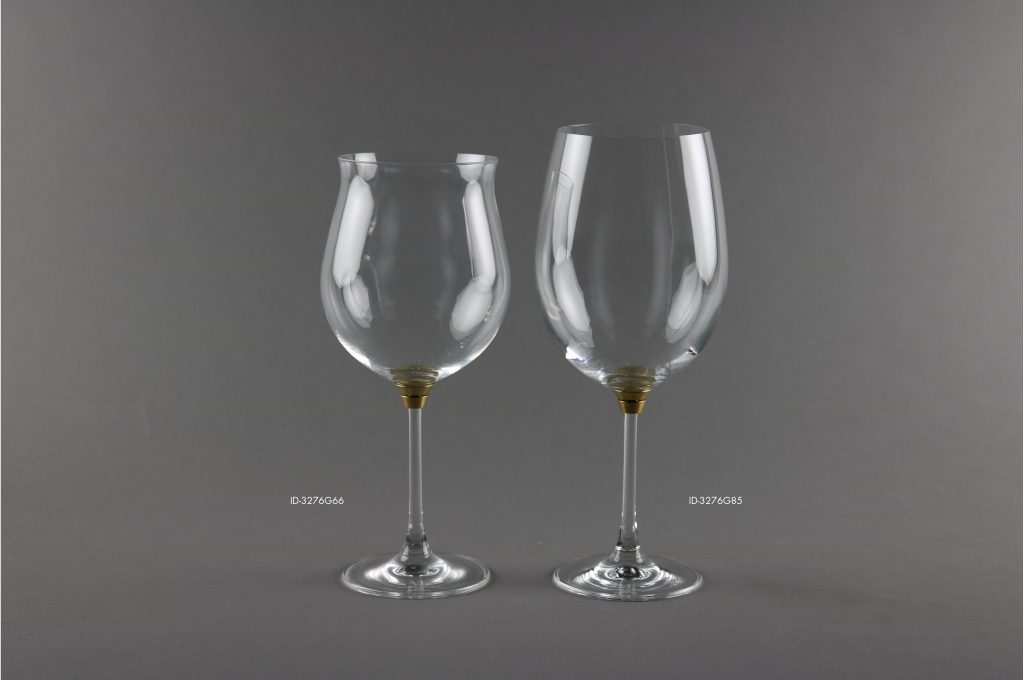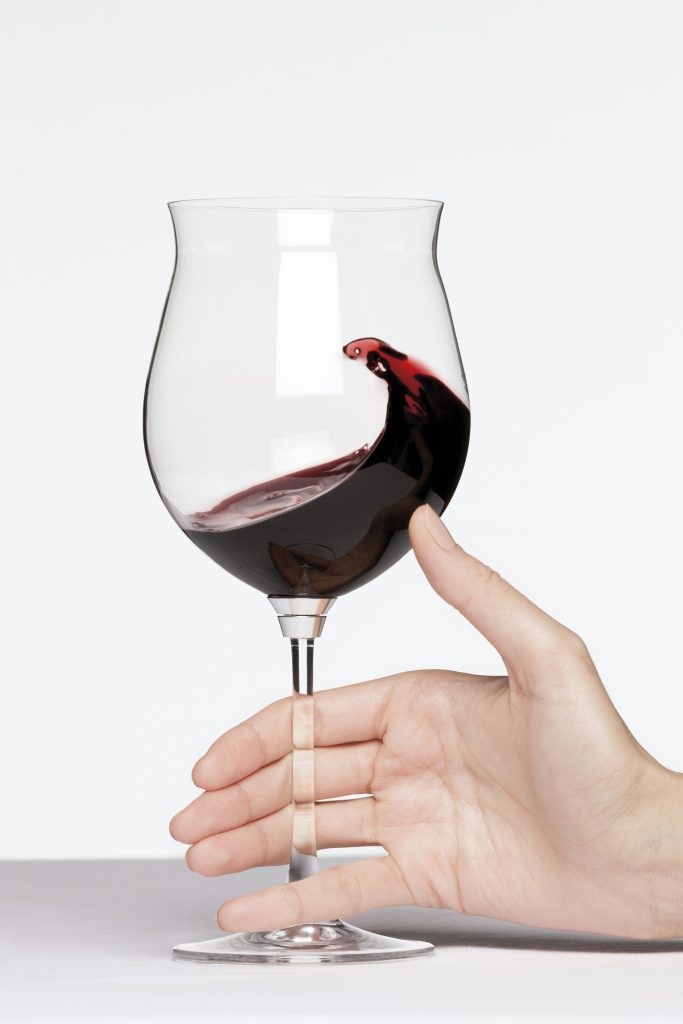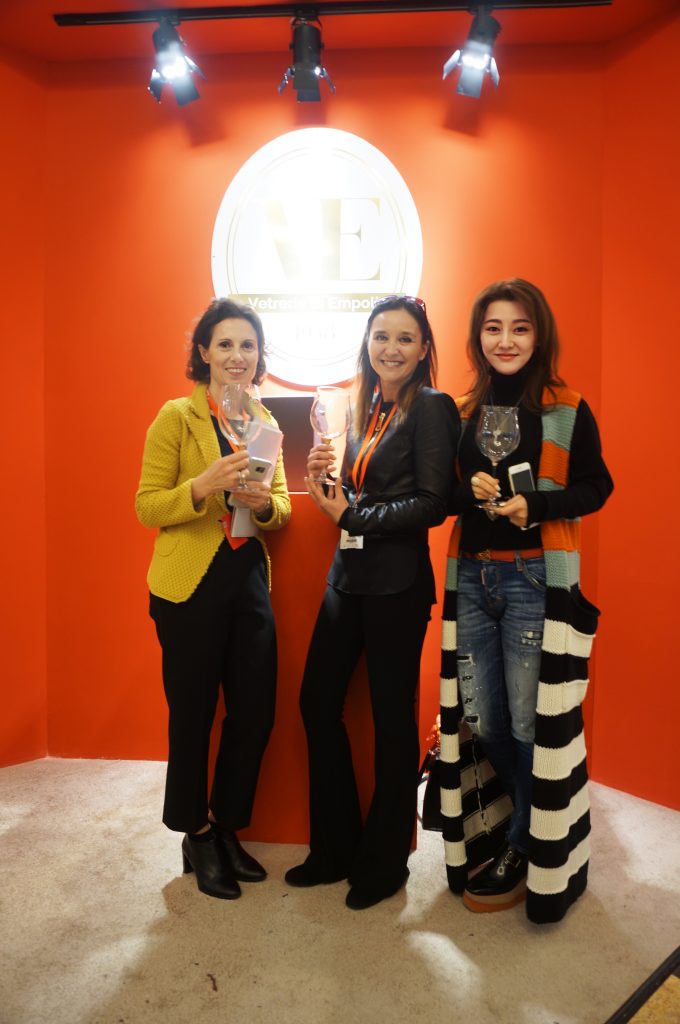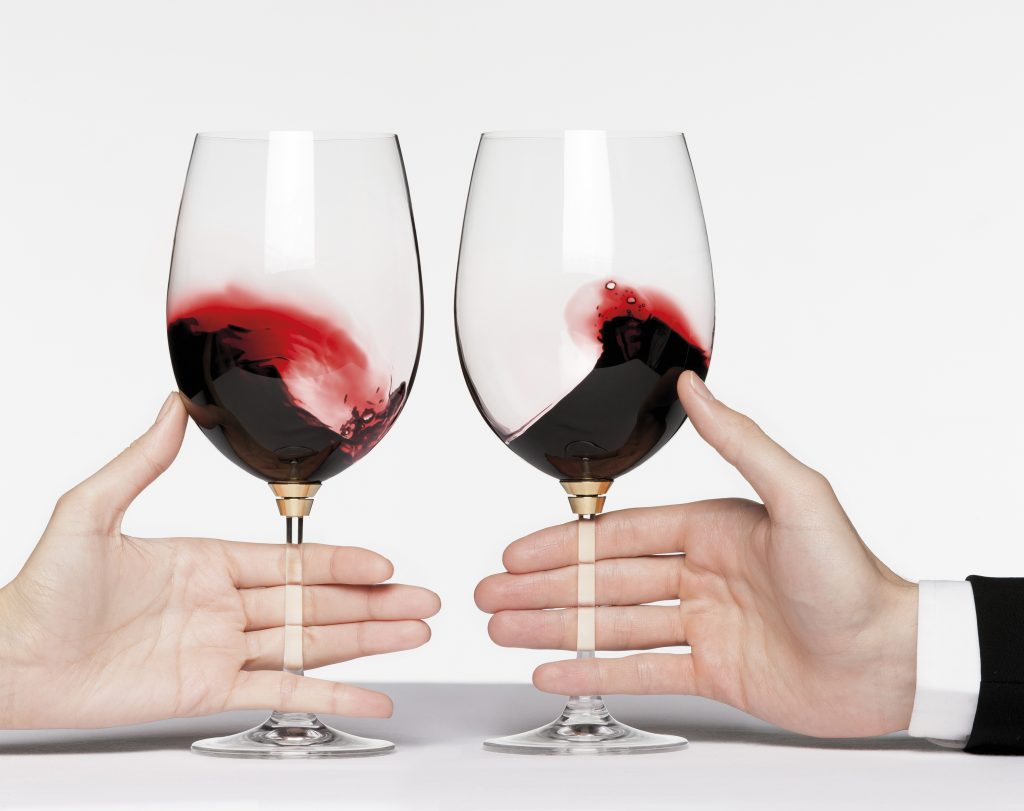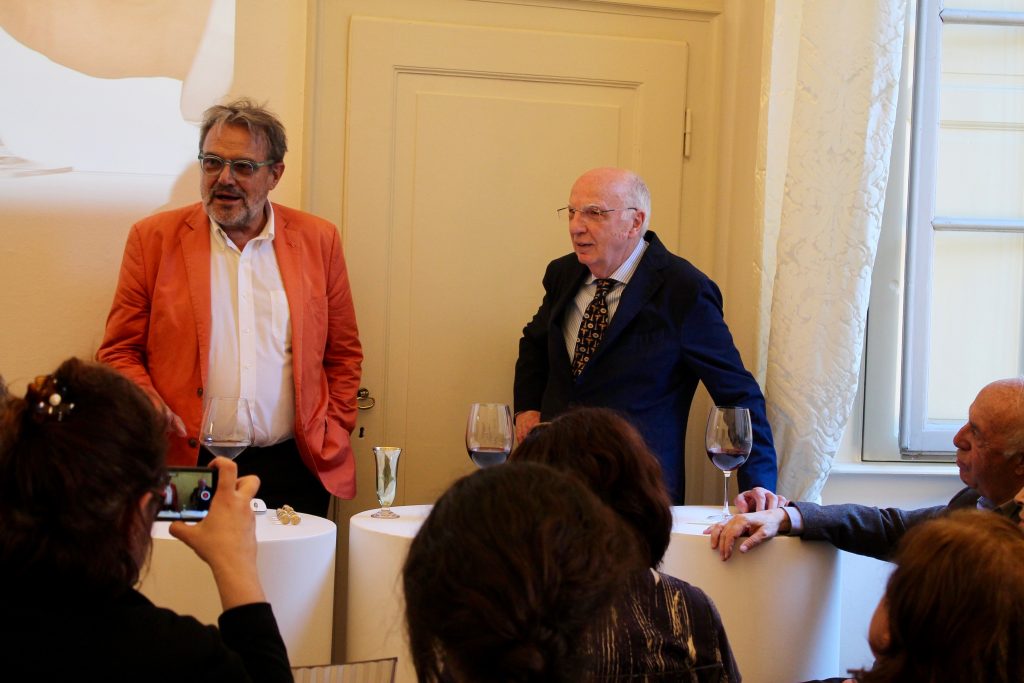Gira e rigira
A glass for tasting
Gira e rigira:
a unique goblet, which revolutionizes the way of tasting wine. Franco Parentini, owner of Vetrerie di Empoli, modernizes the particular movement of the wine poured in the glass and of the hand that delicately moves to rotate and analyze it.a small metal globe inserted between the top of the stem and the base of the glass allows, with a single, light caress of the thumb to give a soft rotating movement to the wine, in order to allow the evaluation of clarity, color and consistency, olfactory notes and taste sensations.

